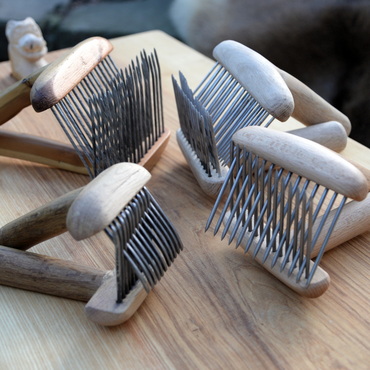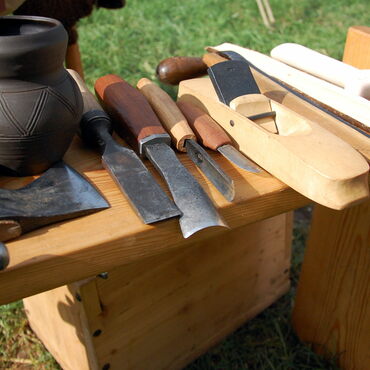Craftsmanship
In a time when industrial mass produced articles from the Far East dominate the tools of everyday life, many of us engage in craftsmanship in their free time, because having something "made by oneself", however crude, gives a certain satisfaction. So it is likely that many of us in the reenactment scene have made their equipment in the same manner, even if he or she might actually portray a warrior. But it is here where the difference between the "do-it-yourselfers" and professional craftsmen lies: the former yields with sometimes the most up-to-date tools a presentable material result, whereas craftsmanship is a defining part of the portrayal of Viking Age life. Those with the goal of an authentic portrayal of craftsmanship should therefor work with accurate reconstructions of historical tools and means and should be able to delight the watching visitor with some knowledge.
So much for the standard. Unfortunately, we too are still far from meeting it. The making of furniture and tools still dominates the craftsmanship of our members, which include a wide spectrum of materials to be worked: wood, leather, rawhide, brass, bronze and iron are some of those.
If one thinks about the structure of rural society around the year 900, which mostly were self-sustaining farm communities without high specialization of single members, the aforementioned "still" could become a "permanently": Everything that in "the olden days" could be done without the help of specialized craftsmen (some early and important examples are: smith, cooper, turner) was probably done by the farmer himself.

